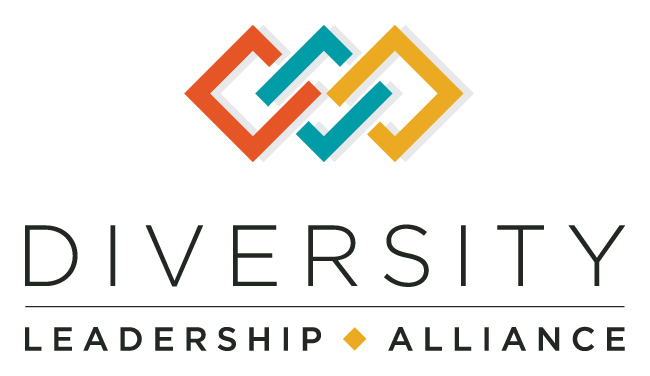
In an ever-globalizing world, diversity is more than just a buzzword; it is a vital component of successful organizations and thriving communities. As the demographic make-up of organizations, cities, and nations becomes increasingly varied, the drive for diversity and inclusion ensures that every individual, regardless of their background, feels valued and integrated. But how do we achieve genuine diversity? Community engagement is paramount. This article delves into why engaging with communities is vital for effective diversity initiatives, focusing on insights from the United States.
Understanding the Historical Context and Present Need
For the United States, a nation built by immigrants, diversity has been an intrinsic characteristic since its inception. Yet, the journey towards true inclusivity has been fraught with challenges. According to the U.S. Census Bureau, by 2045, whites will no longer make up the majority population in the U.S., highlighting the importance of diversity. Organizations like the Diversity Leadership Alliance have been at the forefront of promoting inclusive community engagement, recognizing that isolated efforts within organizational walls are insufficient.
The History and Relevance of Diversity in the U.S
The US has always been referred to as the “melting pot” due to its diverse racial and ethnic composition. However, the history of smooth integration and acceptance by the majority white populace has been uneven at best. Policies such as the Chinese Exclusion Act of 1882, the forced internment of Japanese Americans during World War II, or more recently, discussions around building a wall across the US-Mexico border, are testament to these struggles.
Despite these challenges, the benefits of diversity, both socially and economically, are undeniable. Here are a few key points:
- Diversity increases innovation and creativity, which helps to drive economic growth.
- A diverse population can offer a wider range of skills, perspectives, and experiences, which can contribute to problem-solving capabilities.
- Diversity is fundamental in teaching empathy and cross-cultural understanding, a key element in maintaining social cohesion.
Present-Day Concerns and Future Outlook
Yet, in light of the impending shift of racial majority by 2045, organizations and society in general have an increased responsibility to champion diversity and inclusivity. Racial and ethnic tensions, hate crimes, and systemic bias persist as significant challenges today. Based on FBI crime data in 2019:
| Category | Number of Hate Crimes |
| Race/Ethnicity | 4,930 |
| Religion | 1,650 |
| Sexual Orientation | 1,195 |
In total, that is almost 8,000 hate crimes recorded in 2019 alone.
This demonstrates an urgent need for societies and organizations to ramp up their diversity and inclusivity efforts, not just in words, but in tangible actions and policies. Organizations like the Diversity Leadership Alliance are setting the pace, recognizing that the walls of an organization are not enough to insulate against these societal issues.
The Role of Community Engagement in Diversity Initiatives
Community engagement involves actively working with people and groups outside of one’s immediate organizational environment. It’s about building bridges and creating partnerships. The Diversity Leadership Alliance serves as a prime example of how fostering inclusive communities can lead to successful diversity initiatives. Engaging with community members helps organizations understand cultural nuances and develop culturally sensitive practices that can impact more than just business but education, policy, and social structures.
Benefits of Engaging Diverse Communities
Diverse community engagement brings numerous benefits, including improved organizational performance and innovation. According to a study by McKinsey & Company, companies in the top quartile for ethnic and cultural diversity are 36% more likely to have above-average profitability.
Additionally, engaged communities often serve as a talent pool, offering organizations a mix of perspectives that enrich problem-solving and creativity. Community engagement is also linked to improved employee morale and customer satisfaction, as stakeholders feel represented and heard. Let us now have a look at some of the benefits of engaging diverse communities:
- Enhanced Organizational Performance
Companies in the top quartile for ethnic and cultural diversity are 36% more likely to achieve above-average profitability (McKinsey & Company).
- Greater Innovation and Problem-Solving
Diverse perspectives lead to more creative, well-rounded solutions by encouraging out-of-the-box thinking and reducing group thinking.
- Access to a Broader Talent Pool
Engaged communities often provide access to unique skill sets, cultural insights, and varied lived experiences that strengthen recruitment and leadership development.
- Improved Employee Morale and Retention
Employees feel more valued and included when their organization reflects a commitment to diversity, boosting engagement, satisfaction, and loyalty.
- Increased Customer Satisfaction and Brand Loyalty
Customers are more likely to trust and support brands that represent and understand them, leading to stronger relationships and repeat business.
- Stronger Brand Reputation and Social Impact
Active and authentic community engagement enhances a company’s public image and demonstrates its role as a socially responsible organization.
Strategies for Effective Community Engagement
Creating effective diversity initiatives through community engagement requires deliberate strategies. Companies can start by building trust and relationships within communities through consistent interaction, which can be fostered by establishing forums for dialogue and engagement, much like the Diversity Leadership Alliance offers. Furthermore, leveraging local leaders as ambassadors can enhance credibility and outreach.
Measuring Success in Diversity Initiatives
Quantifying the success of diversity initiatives is crucial to ensuring effectiveness and accountability. Metrics such as demographic composition over time, employee satisfaction surveys, and community impact assessments are useful tools. The Diversity Leadership Alliance emphasizes using data to inform strategy, ensuring that diversity goals align with overall organizational objectives.
Case Study – Diversity Leadership Alliance
The Diversity Leadership Alliance, originating as a collaborative effort among leaders in Arizona, exemplifies how strategic community engagement significantly strengthens diversity initiatives. By building networks across organizations and offering educational resources, DLA has made impactful strides in promoting inclusivity. Their work underscores the importance of having committed, knowledgeable partners to drive change.
The Economic Impact of Diverse Community Engagement
Diverse community engagement isn’t just a moral or social imperative; it has tangible economic impacts. Deloitte reports that inclusive cultures are twice as likely to meet or exceed financial targets, three times as likely to be high performing, and six times as likely to be innovative and agile. The connection between diversity and economic performance cannot be ignored.
The Role of Technology in Facilitating Engagement
Technology plays a pivotal role in community engagement strategies, breaking down geographical and cultural barriers. Digital platforms can facilitate virtual interactions, webinars, and forums where diverse voices can converge. The Diversity Leadership Alliance’s online initiatives have shown the power of technology in reaching broader audiences, enhancing learning and collaboration, and fostering inclusive community development.
Building a Sustained Commitment to Diversity
Long-term success in diversity initiatives requires sustained commitment from leadership and all organizational levels. Employees must feel that diversity is valued, not just superficially addressed. Companies like the Diversity Leadership Alliance encourage a model of continuous engagement and learning, where diversity is seen as an ongoing journey rather than a destination.
The Future of Diversity Initiatives
Looking ahead, the future of diversity initiatives in the U.S. will hinge on seamless integration of community engagement into organizational culture. As demographics continue to shift, and the global landscape evolves, maintaining participatory channels and partnerships with community entities will become even more critical. Organizations must adapt and innovate to stay relevant and truly inclusive, drawing lessons from entities like the Diversity Leadership Alliance.
Key Takeaways
Community engagement is the backbone of stronger diversity initiatives, offering a path toward more inclusive, innovative, and successful organizations. Through direct interaction with diverse communities, organizations can gain critical insights, foster genuine inclusivity, and ultimately achieve greater business success and societal contribution.
As the landscape of opportunity continues to evolve, entities like the Diversity Leadership Alliance highlight the transformative power of commitment, education, and collaboration in this realm. The future will undoubtedly favor those who embrace and effectively manage diversity.
FAQs
What is community engagement, and why is it important in diversity initiatives?
Community engagement refers to building relationships and collaborating with individuals and groups outside an organization to foster mutual understanding and drive positive outcomes. In diversity initiatives, it is a key to ensuring that voices from all community sectors are heard and represented.
Bringing diverse perspectives together can lead to more innovative solutions and a well-rounded approach to challenges. Effective community engagement helps organizations understand cultural nuances, enhance customer satisfaction, retain top talent, and sustain successful, inclusive initiatives.
How can organizations overcome challenges in engaging diverse communities?
Overcoming challenges in engaging diverse communities requires strategic, thoughtful approaches. Organizations can start by addressing cultural misunderstandings through awareness and sensitivity training. Open dialogue and platforms where biases can be challenged and reeducated are crucial.
Additionally, addressing resource limitations through partnerships with experienced entities such as the Diversity Leadership Alliance can provide necessary support and shared expertise. Transparency and ongoing communication are also key to building trust and overcoming skepticism within communities.
What role does the Diversity Leadership Alliance play in promoting community engagement?
The Diversity Leadership Alliance plays a fundamental role by acting as a bridge between organizations and their broader communities. As a leader in diversity education and engagement since 2002, DLA provides forums, resources, and collaborative opportunities to help organizations and business leaders understand and integrate community insights into their diversity initiatives.
By offering strategic, development focused learning experiences, DLA fosters dialogue, facilitates partnerships, and empowers individuals and organizations to build inclusive cultures.
How can the success of diversity initiatives be measured effectively?
Measuring the success of diversity initiatives effectively requires both qualitative and quantitative approaches. Organizations can utilize metrics like changes in employee demographics, increased retention rates of diverse staff, and improvements in employee and customer satisfaction scores.
Surveys and feedback mechanisms also provide valuable insights into the perceived inclusivity of the workplace. Additionally, the impact on local communities and economic results, such as profitability and innovation levels, should be assessed to gauge the broader success of diversity initiatives.
How important is leadership in driving community-engaged diversity initiatives?
Leadership is critical in driving successful community-engaged diversity initiatives. Leaders set the tone and culture of an organization, spearheading the vision for inclusivity. Their commitment to diversity can influence organizational policies, ensuring that diversity goals are prioritized and achieved.
As seen with the Diversity Leadership Alliance, effective leadership fosters an environment where diversity is embedded into the corporate fabric, sustaining initiatives over time and ensuring alignment with broader community needs.

